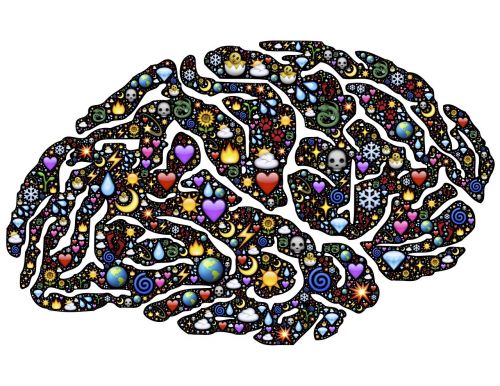Kenan Malik in Pandaemonium:
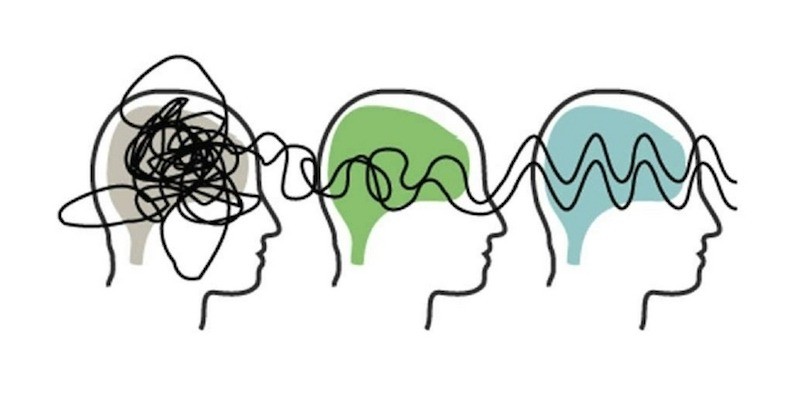 Are you racist? And, if so, how would I know? I used to think that a good gauge may be whether you call me a ‘Paki’, or assault me because of my skin colour, or deny me a job after seeing my name. But, no, these are just overt expressions of racism. Even if you show no hostility, or seek to discriminate, you’re probably still racist. You just don’t know it. Especially if you’re white. And if you protest about being labelled a racist, you are merely revealing what the US academic and diversity trainer Robin DiAngelo describes in the title of her bestselling book as your ‘white fragility’.
Are you racist? And, if so, how would I know? I used to think that a good gauge may be whether you call me a ‘Paki’, or assault me because of my skin colour, or deny me a job after seeing my name. But, no, these are just overt expressions of racism. Even if you show no hostility, or seek to discriminate, you’re probably still racist. You just don’t know it. Especially if you’re white. And if you protest about being labelled a racist, you are merely revealing what the US academic and diversity trainer Robin DiAngelo describes in the title of her bestselling book as your ‘white fragility’.
You either accept your racism, or reveal your racism by not accepting it. Indeed, as DiAngelo explains, it’s ‘progressives’ confronting racism who ‘cause the most damage to people of colour’ because they imagine that they are anti-racist. Racism is, as she puts it, ‘unavoidable’.
More than 30 years ago, Ambalavaner Sivanandan warned against ‘the sort of psychospiritual mumbo-jumbo which… by reducing social problems to individual solutions, passes off personal satisfaction for political liberation’. A radical whose writings influenced a generation of activists in the 1970s and 80s, Sivanandan was an early critic of what was then called ‘racial awareness training’.
More here.

 We gather empirical evidence about the nature of the world through our senses, and use that evidence to construct an image of the world in our minds. But not all senses are created equal; in practice, we tend to privilege vision, with hearing perhaps a close second. Ann-Sophie Barwich wants to argue that we should take smell more seriously, and that doing so will give us new insights into how the brain works. As a working philosopher and neuroscientist, she shares a wealth of fascinating information about how smell works, how it shapes the way we think, and what it all means for questions of free will and rationality.
We gather empirical evidence about the nature of the world through our senses, and use that evidence to construct an image of the world in our minds. But not all senses are created equal; in practice, we tend to privilege vision, with hearing perhaps a close second. Ann-Sophie Barwich wants to argue that we should take smell more seriously, and that doing so will give us new insights into how the brain works. As a working philosopher and neuroscientist, she shares a wealth of fascinating information about how smell works, how it shapes the way we think, and what it all means for questions of free will and rationality.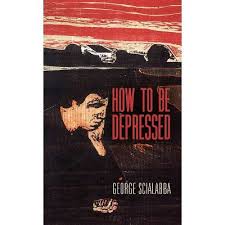 Depression forces itself through the cracks of one’s life, finding the weak spots particular to the person it inundates. Like consciousness itself, depression seems to dwell in that hazy realm where matter and spirit meet, and we turn inward to pursue its elusive essence. Exploring what caused a person’s depression, however, what set it off on the particular course it ran, necessarily ends in an overdetermined tangle—one reason why the shelves overflow with depression memoirs. We keep trying to pin depression down, but fail again and again. Styron’s depression set upon him when he was around sixty years old, likely “triggered” when he suddenly gave up alcohol and began taking a dangerous sleeping medication. But as Styron meditates on what happened to him, the chain of causation extends ever backward—he realizes three main characters in his novels kill themselves, a fact that suggests the storm had been gathering for many years. Then he presses on to childhood wounds. Would a man who’d led a different life sink into depression after he quit drinking? Styron gets to the end of Darkness Visible and confesses, “The very number of hypotheses is testimony to the malady’s all but impenetrable mystery.”
Depression forces itself through the cracks of one’s life, finding the weak spots particular to the person it inundates. Like consciousness itself, depression seems to dwell in that hazy realm where matter and spirit meet, and we turn inward to pursue its elusive essence. Exploring what caused a person’s depression, however, what set it off on the particular course it ran, necessarily ends in an overdetermined tangle—one reason why the shelves overflow with depression memoirs. We keep trying to pin depression down, but fail again and again. Styron’s depression set upon him when he was around sixty years old, likely “triggered” when he suddenly gave up alcohol and began taking a dangerous sleeping medication. But as Styron meditates on what happened to him, the chain of causation extends ever backward—he realizes three main characters in his novels kill themselves, a fact that suggests the storm had been gathering for many years. Then he presses on to childhood wounds. Would a man who’d led a different life sink into depression after he quit drinking? Styron gets to the end of Darkness Visible and confesses, “The very number of hypotheses is testimony to the malady’s all but impenetrable mystery.” SURVEYING OUR CULTURAL LANDSCAPE through the prepositional prism of after is hardly a new approach among critics and historians writing on art during the past quarter century. Yet, as articulated in the title of Hal Foster’s new book, the premise is newly intriguing for being tethered to—and eclipsed in blunt rhetorical force by—the sad comedy of “farce.” Here Foster borrows the term from Marx’s famous adage regarding the French bourgeoisie’s willingness in 1851 to cede democratic values to a second Bonaparte emperor some fifty years after the first—a scenario that resonates strongly with our circumstances today, Foster suggests, insofar as Donald Trump’s arrival on the American scene must be understood not as a singularity but rather as another iteration of the authoritarian impulses that originally took root in the wake of 9/11. If “alternative facts” and conspiracy theories now flourish along the banks of the mainstream, they first needed the rich soil fertilized by the nationalist kitsch proffered at the start of the second Iraq war. To bolster his point, Foster cites novelist Milan Kundera’s observation that “in the realm of totalitarian kitsch all answers are given in advance and preclude any questions,” adding that such an epistemology met the fuel of populist affect at the dawn of the 2000s.
SURVEYING OUR CULTURAL LANDSCAPE through the prepositional prism of after is hardly a new approach among critics and historians writing on art during the past quarter century. Yet, as articulated in the title of Hal Foster’s new book, the premise is newly intriguing for being tethered to—and eclipsed in blunt rhetorical force by—the sad comedy of “farce.” Here Foster borrows the term from Marx’s famous adage regarding the French bourgeoisie’s willingness in 1851 to cede democratic values to a second Bonaparte emperor some fifty years after the first—a scenario that resonates strongly with our circumstances today, Foster suggests, insofar as Donald Trump’s arrival on the American scene must be understood not as a singularity but rather as another iteration of the authoritarian impulses that originally took root in the wake of 9/11. If “alternative facts” and conspiracy theories now flourish along the banks of the mainstream, they first needed the rich soil fertilized by the nationalist kitsch proffered at the start of the second Iraq war. To bolster his point, Foster cites novelist Milan Kundera’s observation that “in the realm of totalitarian kitsch all answers are given in advance and preclude any questions,” adding that such an epistemology met the fuel of populist affect at the dawn of the 2000s. Humans are almost constantly connected to devices and electronics that generate a significant amount of data about who they are and what they do. Many commercially available products like Fitbits, Garmin trackers, Apple watches and other smartwatches are designed to help users take control of their health, and tailor activities to their lifestyle. Even something as unobtrusive to wear as
Humans are almost constantly connected to devices and electronics that generate a significant amount of data about who they are and what they do. Many commercially available products like Fitbits, Garmin trackers, Apple watches and other smartwatches are designed to help users take control of their health, and tailor activities to their lifestyle. Even something as unobtrusive to wear as 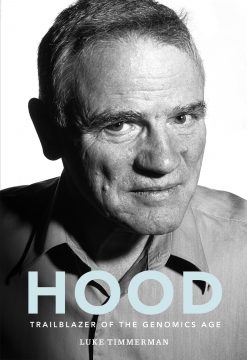 TWO WEEKS BEFORE
TWO WEEKS BEFORE There was a time not long ago when most educated people believed that science would one day explain everything—not only the workings of the physical world but also the secrets to the good life. Such confidence perhaps peaked in the early nineteenth century, when Jeremy Bentham proposed utilitarianism as a way of making happiness quantifiable and the positivist Auguste Comte sought a social physics to apply immutable scientific laws to all aspects of human life. But by the early twentieth century, that boundless faith in science had been badly shaken. Within the academy, philosopher G.E. Moore was widely thought to have refuted empirical approaches to ethics. Within the Temple of Science, the pace of new discoveries forced researchers to acknowledge how tentative and contingent their findings were. And ever newer sciences such as quantum physics made people wonder whether there was anything regular or predictable (or even ultimately material) about even the physical world. As for relying on science and the calculus of the greater good to tell us how to live our lives—particularly after the serial horrors of two world wars—that notion increasingly met with skepticism, if not outright derision. Today, most thoughtful people dismiss the old scientism as crudely reductive, and certainly irrelevant as a source of moral and ethical guidance. Except…
There was a time not long ago when most educated people believed that science would one day explain everything—not only the workings of the physical world but also the secrets to the good life. Such confidence perhaps peaked in the early nineteenth century, when Jeremy Bentham proposed utilitarianism as a way of making happiness quantifiable and the positivist Auguste Comte sought a social physics to apply immutable scientific laws to all aspects of human life. But by the early twentieth century, that boundless faith in science had been badly shaken. Within the academy, philosopher G.E. Moore was widely thought to have refuted empirical approaches to ethics. Within the Temple of Science, the pace of new discoveries forced researchers to acknowledge how tentative and contingent their findings were. And ever newer sciences such as quantum physics made people wonder whether there was anything regular or predictable (or even ultimately material) about even the physical world. As for relying on science and the calculus of the greater good to tell us how to live our lives—particularly after the serial horrors of two world wars—that notion increasingly met with skepticism, if not outright derision. Today, most thoughtful people dismiss the old scientism as crudely reductive, and certainly irrelevant as a source of moral and ethical guidance. Except… “Wait. I can catch Covid twice?” my 50-year-old patient asked in disbelief. It was the beginning of July, and he had just tested positive for SARS-CoV-2, the virus that causes
“Wait. I can catch Covid twice?” my 50-year-old patient asked in disbelief. It was the beginning of July, and he had just tested positive for SARS-CoV-2, the virus that causes 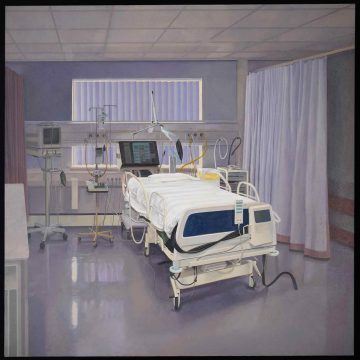 Sonic branding is big business. Should you be interested, you could commission the composition of a long-form anthem, a sonic logo, or the sounds your product emits during user operation. Computer and video game companies lavish much time, effort, and money on the second and third of these. For a canonic commission, there is the Windows 95 start-up sound designed by Brian Eno. A more guerilla affair was Jim Reekes’s Apple computer start-up chime, which he snuck onto a new Mac model without permission circa 1992.
Sonic branding is big business. Should you be interested, you could commission the composition of a long-form anthem, a sonic logo, or the sounds your product emits during user operation. Computer and video game companies lavish much time, effort, and money on the second and third of these. For a canonic commission, there is the Windows 95 start-up sound designed by Brian Eno. A more guerilla affair was Jim Reekes’s Apple computer start-up chime, which he snuck onto a new Mac model without permission circa 1992.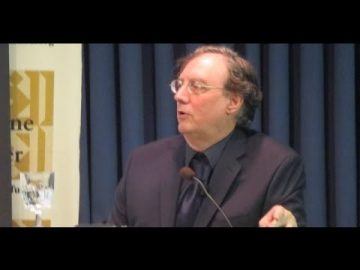 Peter Beinart, a professor of journalism at the City University of New York, has caused a stir in the past week with
Peter Beinart, a professor of journalism at the City University of New York, has caused a stir in the past week with  Like many a subsequent empire, Rome had a highly ambivalent relationship with the outsiders it needed to fuel its commerce, stock its slave markets and man its armies. In this particular case, those outsiders were not colonised peoples but the Germanic barbarian tribes living in areas against which the waves of Roman imperialism had only lapped during the empire’s high tide, before it began to recede in the third century. The Danube basin, where Alaric grew up in the 370s, seems from Boin’s account an idyllic place: his family home bore the bucolic name Pine Tree Island and Boin conjures an image of infant Goths listening to tales of their heroic ancestor King Berig, who had led his people – perhaps understandably – out of a homeland of ‘quaking bogs’ called Scandza. Yet it was also a place of profound danger: of slave traders who kidnapped young girls in order to sell them south of the river, of ghosts and demons and, most threatening of all, of predatory Roman officials whose actions in trying to starve would-be migrants who were crossing the imperial frontier led to the first mass Gothic raids on the Balkans.
Like many a subsequent empire, Rome had a highly ambivalent relationship with the outsiders it needed to fuel its commerce, stock its slave markets and man its armies. In this particular case, those outsiders were not colonised peoples but the Germanic barbarian tribes living in areas against which the waves of Roman imperialism had only lapped during the empire’s high tide, before it began to recede in the third century. The Danube basin, where Alaric grew up in the 370s, seems from Boin’s account an idyllic place: his family home bore the bucolic name Pine Tree Island and Boin conjures an image of infant Goths listening to tales of their heroic ancestor King Berig, who had led his people – perhaps understandably – out of a homeland of ‘quaking bogs’ called Scandza. Yet it was also a place of profound danger: of slave traders who kidnapped young girls in order to sell them south of the river, of ghosts and demons and, most threatening of all, of predatory Roman officials whose actions in trying to starve would-be migrants who were crossing the imperial frontier led to the first mass Gothic raids on the Balkans.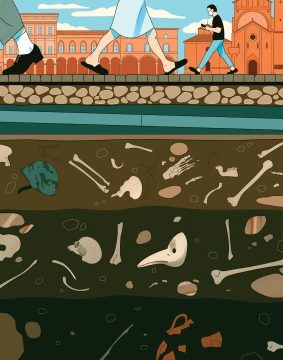 Italy at the beginning of the fourteenth century was a conglomeration of prosperous city-states that had broken free of the feudal system. Some of them, such as Venice, formed merchant republics, which became seedbeds for capitalism. Venice and other coastal cities, including Genoa, Pisa, and Amalfi, set up trading networks and established outposts throughout the Mediterranean and as far away as the Black Sea. Other Italian cities, such as Bologna, became free communes, which meant that peasants fleeing feudal estates were granted freedom once they entered the city walls. Serfs became artisans. A middle class began to form. The early fourteenth century was robust and ambitious. Then, suddenly, people began to die.
Italy at the beginning of the fourteenth century was a conglomeration of prosperous city-states that had broken free of the feudal system. Some of them, such as Venice, formed merchant republics, which became seedbeds for capitalism. Venice and other coastal cities, including Genoa, Pisa, and Amalfi, set up trading networks and established outposts throughout the Mediterranean and as far away as the Black Sea. Other Italian cities, such as Bologna, became free communes, which meant that peasants fleeing feudal estates were granted freedom once they entered the city walls. Serfs became artisans. A middle class began to form. The early fourteenth century was robust and ambitious. Then, suddenly, people began to die.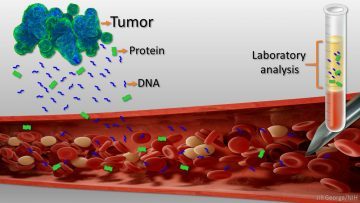 Early detection usually offers the best chance to beat cancer. Unfortunately, many tumors aren’t caught until they’ve grown relatively large and spread to other parts of the body. That’s why researchers have worked so tirelessly to develop new and more effective ways of screening for cancer as early as possible. One innovative approach, called “liquid biopsy,” screens for specific molecules that tumors release into the bloodstream.
Early detection usually offers the best chance to beat cancer. Unfortunately, many tumors aren’t caught until they’ve grown relatively large and spread to other parts of the body. That’s why researchers have worked so tirelessly to develop new and more effective ways of screening for cancer as early as possible. One innovative approach, called “liquid biopsy,” screens for specific molecules that tumors release into the bloodstream.
